#Effluent Management
Text
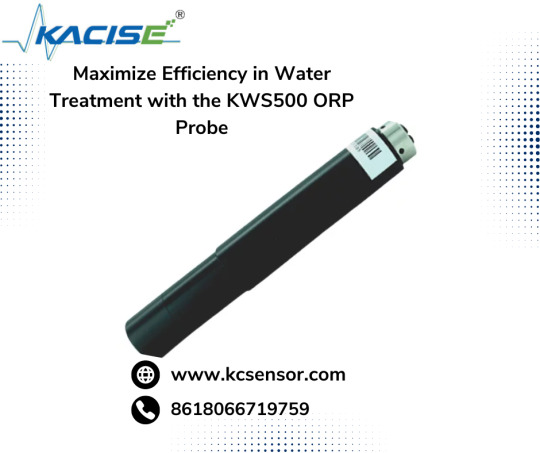
Are you seeking advanced solutions to elevate your water treatment processes? Look no further! Introducing the KWS500 ORP Probe from Kcsensor – the ultimate tool to revolutionize your water treatment efficiency.
#Water Treatment#KWS500 ORP Probe#Water Quality Monitoring#Effluent Management#ORP Measurement#Process Efficiency
0 notes
Text

Wastewater Treatment Company in Trivandrum
Water Purification Services in Trivandrum
#purification#startup#waste management#wastewatertreatment#water purifier#watercolor#kerala#waterpurifier#watertreatment#effluent treatment plant#service#sewage water treatment#water security#sewage treatment plant manufacturer#efficiency#effluentdisposalreport#wastewater data#zero waste#wasteland#water plants#disposable vape
2 notes
·
View notes
Text
Advanced Solutions For Water Treatment Plant Manufacturers in India
Water Treatment Plant Manufacturers in India incorporate cutting-edge technology and innovative processes to purify water and meet stringent quality standards. With this project, we have contributed to improving public health and ensuring a sustainable future for communities across India.

#Water Treatment Plant Manufacturers in India#Sewage Treatment Plant Manufacturers in India#Operation and Maintenance of Water Treatment#Operations and Maintenance in Facility Management#Water Treatment Plant Project#Sewage Treatment Plant Project#Effluent Treatment
2 notes
·
View notes
Text
A Comprehensive Guide to Effluent Treatment Plant Process
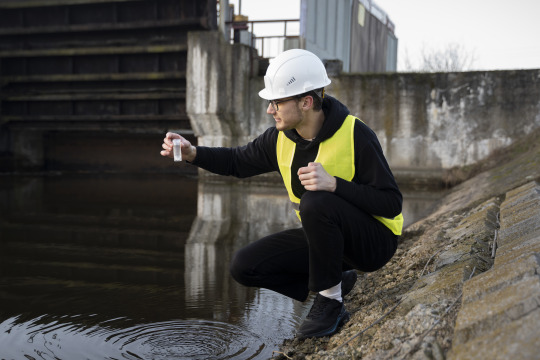
Effluent Treatment Plants (ETPs) are essential in maintaining environmental sustainability by treating industrial wastewater before it is released into natural water bodies. This guide will help you understand the ETP process, and its benefits, and answer common questions related to Effluent Treatment Plants (ETPs) and Common Effluent Treatment Plants (CETPs).
0 notes
Text
#effluent treatment plant#ETP in Hyderabad#Effluent Treatment plant#waste water treatment#water signs#Water management in hydeabad#water companies in hyderabad#best water treatmet company#water solutions in hyderabad
0 notes
Text
Dive into our extensive guide on submersible sewage pumps and discover their essential roles in modern waste management. Learn about the different types of pumps, including grinder, effluent, and sewage ejector pumps, and their specific applications. Understand the benefits such as increased efficiency, quieter operation, and lower maintenance, along with crucial installation tips and common troubleshooting advice to ensure optimal performance and longevity.
#Submersible Sewage Pumps#Grinder Pumps#Effluent Pumps#Sewage Ejector Pumps#Sewage Pump Maintenance#Sewage Pump Installation#Efficient Waste Management#Residential Sewage Solutions
0 notes
Text
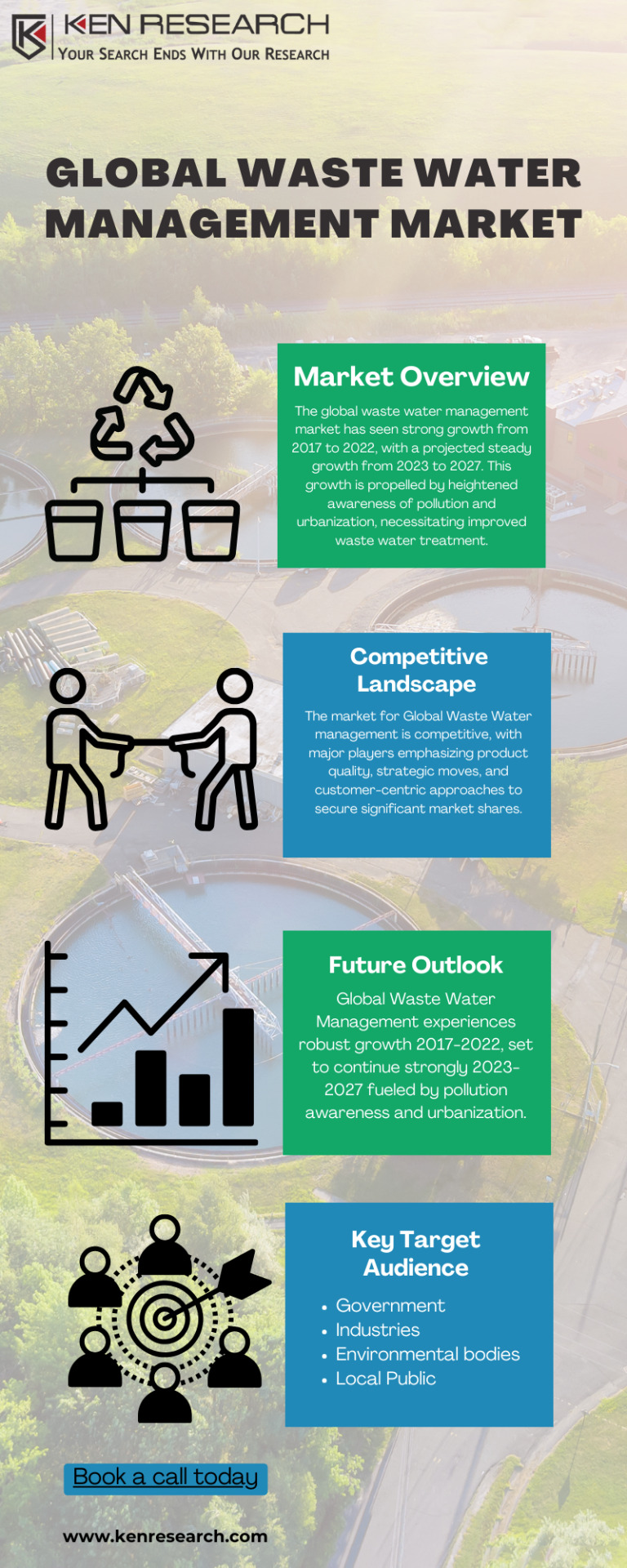
Worldwide Water Waste Management Market 2023-2027
#Global Waste Water Management Market#market research#Global Industrial Waste Water Management Market#Global Sewerage Water Management Market#Global Waste Water Management Market Opportunities#Global Effluent Water Management Market
0 notes
Text
Industrial Effluent Treatment Plant Solutions | Wipro Water
Industrial Effluent treatment plant (ETP) is a facility to remove different types of wastewater contamination in Industries, such as solids, oil, grease, biodegradable organics, toxic materials, acids, and alkalies.
#wastewater treatment process#industrial wastewater treatment plant#industrial wastewater treatment#industrial effluent management#industrial effluent treatment#industrial waste water management
0 notes
Text
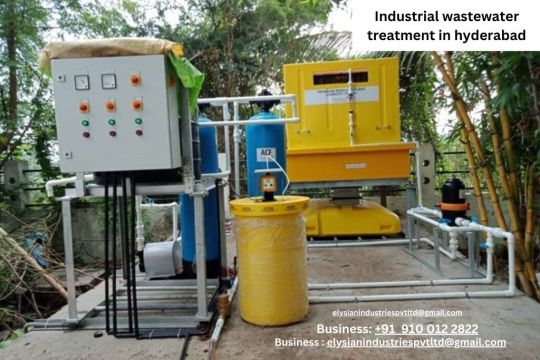
#etp plant#etp plant cost#stp plant#stp plant cost#Wastewater treatment plant#Sewage treatment plant#Industrial wastewater treatment#Effluent Treatment Plant#Wastewater treatment company in hyderabad#water treatment solutions#solid waste management solutions#Sewage treatment plant in hyderabad#Wastewater treatment plant suppliers
0 notes
Text
The Little Salmon Carmacks First Nation is warning spring melt could cause the tailings dam at the abandoned Mount Nansen mine in central Yukon to overflow or breach, and send a toxic slurry into the environment.
The company managing the site, however, says a dam breach is unlikely — though it could be at risk of overflowing.
Little Salmon Carmacks Chief Nicole Tom calls it an emergency, and compared it to the 2014 Mount Polley mine disaster in B.C. that saw roughly 25 million cubic metres of water and tailings effluent flow into surrounding waterways. It was the largest tailings spill in Canadian history.
Full article
Tagging: @politicsofcanada
#cdnpoli#canada#canadian politics#canadian news#canadian#little salmon carmacks first nation#Indigenous#First Nations#environment#spring melt#yukon
699 notes
·
View notes
Text
"A new community housing development in the Bronx will feature a cool piece of kit: an on-site aerobic digester that can turn 1,100 pounds of food scraps into 220 pounds of high-quality fertilizer every single day.
Built by Harp Renewables, it’s basically a big stomach filled with bacteria that breaks down food scraps and wasted food into their component parts, and in the future could be a standard part of all apartment units as the amount of food waste in American reaches 30% of the total mass of all trash collection.
The Peninsula, organized by Gilbane Development Company, will feature 740 units of affordable housing, 50,000 square-foot light industrial space and equal sized green space, and 15,000 feet of commercial space, all of which will send their castaway comestibles right into the digester...
Fast Company reports that Christina Grace, founder of a zero-waste food management company, helped plan the design and implementation of the digester into The Peninsula, and helped organize a 40% grant from the city to pay the $50,000 upfront cost.
“The goal is for this material to work its way into the community garden network in the Bronx,” [Christina Grace, who helped plan the design] told the magazine, adding that she expects it to pay for itself over just a few years. “We see this as highly replicable in both commercial and residential venues. We know there’s a need for fertilizer.”
Producing fertilizer right there in the city reduces the need for it to be trucked in from afar, chipping away, even if just a bit, at NYC traffic.
Big problem solver
Perhaps uniquely beneficial to New York City compared to other spots in the U.S. is that the digester will have a significant impact on the Bronx’s share of the city’s rodent problem.
Those who’ve watched the Morgan Spurlock documentary Rats will understand why that’s significant—while those that haven’t will have to imagine what living in a megacity where rats outnumber people by around 8 or 10 to 1 looks like.
Another big problem the bio-digesters could potentially help is pollution and greenhouse gas emissions. Fertilizer is a big emitter of all three of the most-targeted GHGs. Fertilizer, like quarry dust and ammonia is, like so many commodities, often imported from countries who specialize in its production, such as Norway, but also Russia and Ukraine, whose conflict has recently highlighted the fragility of the supply chain with sharp increases in prices...
Bio-digesters by design keep the CO2 and methane in the fertilizer produced, rather than it entering the atmosphere.
For these reasons and more, the aerobic bio-digester is slowly making its way into residential and industrial spaces around the country.
GNN reported on an enormous bio-digester at the heart of the D.C. advanced resource (sewage) recovery center outside the capital, and on the use of bio-digesters on Australian pig farms which are helping reduce the environmental and psychological impact of the effluent produced from such operations.
Harp Renewables tweeted how happy they were to have installed their bio-digester in the town of Cashel, Ireland.
Expect to see more stories like this pop up around the globe."
-via Good News Network, March 17, 2022
Note: Obviously gentrification bad and "affordable housing" is sometimes nowhere near as affordable as it should be, etc. etc. That said, this is such a fantastic use case that I felt I had to post it anyway.
#new york#new york city#bronx#bronx new york#supply chain#fertilizer#circular economy#sustainability#sustainable architecture#sustainable agriculture#united states#apartment buildings#bio-digester#good news#food waste#organic waste#hope#hope posting
322 notes
·
View notes
Note
hello! hope you’re having a lovely day, i really love your writing! i know you just wrote the last part but could you please continue a bird in the hand? :)
So happy you like it : )
Hope part 5 doesn't disappoint
---
CW - Blood
Part 1
Part 2
Part 3
Part 4
A Bird in the Hand, Part 5
When the hero opened the front door of the villain’s lair, the ghostly moonlight stretched across the floor and onto the civilian.
The civilian was seated upon the tiled floor of the magnificent entrance hall, elbows resting on the bottom steps of the sweeping mahogany staircase.
They weren’t chained, or tied in any way. With their legs as they were, there was no need.
“This is a trap,” they said. Their tired voice echoed slightly in the yawning dark.
“God, [Civilian],” the hero said. “What did they do to you?” They took a step forward.
“Stop!” The civilian’s voice rose. “Didn’t you hear me? Stay there. [Villain]'s been acting like they have a plan to defeat you.”
The hero paused in the doorway. “Where are they?”
“I’m not sure.” The civilian’s irises, small and shaking in the whites of their eyes, roved over the walls, the ceiling. “They’re listening, just so you know.”
Was it worse for the hero to move forward, or stay put? What kind of weapon was the villain going to use? Perhaps they’d counted on the civilian warning the hero. Maybe this was all part of their plan.
Just go. Leave me here.
The civilian wanted to laugh. They really were pathetic, weren’t they? As selfish as it was, they couldn’t bring themself to say the words.
Then the civilian lowered their gaze, and saw the hero striding towards them. “Hey, don’t – ”
“I’m going to pick you up, okay babe?” They looped one arm around the civilian’s shoulders, and used the other to support their cast. They lifted. “You tell me if anything hurts, alright?”
“Hold on. We need a strategy. I – [Hero] watch out!”
The hero managed to jump out of the way just in the nick of time. A thick mass of shadow crashed into the wall right behind where they’d been standing.
“You shouldn’t take what doesn’t belong to you,” the villain said. Ebony shadows pooled like balls of smoke around their fists.
The hero placed the civilian down. The movement was quick, and the civilian ended up putting weight on their broken leg. They bit back a scream.
With the civilian on the ground, the fight began in earnest.
The civilian had never seen the villain’s power in person before. But they’d seen videos on the news, and listened to the hero talk about it. The villain’s shadows were wispy, and effluent. They were perfect for stealth and disguises, but were too thin and watery for a real fight.
Which was why they always relied on their tricks and traps, and never took the hero head-on. Which was why the civilian’s eyes were now wide with shock. The scene before them shouldn’t have been happening.
A monstrous wave of shadow hurtled into the hero. They skid across the tile, landing against the far wall with a reverberating bang. The villain launched blast after blast at them, never giving them a chance to recover their footing.
Gritting their teeth, the civilian eased their weight onto their stabbed leg, as it was mildly better than their broken one.
Finally, the villain let up for a second, allowing the hero to stand.
“You bastard,” the hero muttered, getting up on wobbly feet. “How long have you been planning this?”
“Don’t ask questions you don’t want the answers to.”
The hero tried to launch forward. The villain flicked out long spindly tendrils of shadow. They wrapped around the hero’s arms. Ripped into the hero’s skin like tissue paper. A strained grunt escaped the hero’s mouth as they tried to suppress a cry.
“I must say.” The villain pulled back, and refined their shadows into a long whip. “This moment is everything I imagined.”
They struck the hero. Blood streaked across their face, trickled in rosy rivulets down their front.
“You have no idea how long I’ve wanted this. The glorious sight of you, beaten into the ground.” The villain laughed. The sound of it was cruel and low.
The hero wore a pained grin. “[Civilian] doesn’t love you. You know that, right? They’d leave you right now, if they could.”
The villain raised their arms, and brought them down. A tempest of shadow fell on the hero like an avalanche. The hero let out a scream that could rattle teeth.
The villain’s eyes were vibrant, and wired. Shot through with 5000 volts and ready to surge.
Then, they looked down, as they felt a thin hand grab their own.
“Please.” The civilian had crawled over on their trembling leg. “Please, you’re going to kill them.”
“[Civilian], don’t talk to them,” the hero rasped.
“Please.”
The villain peered down at the civilian. There was power in their shoulders, and pure murderous intent spelt on their face. They were oddly beautiful, in a cosmically terrifying way. Watching the villain reach a decision was like staring up into the uninterrupted night, and trying to remain still as the sky itself moved, and the stars slowly turned to stare back.
“You’d crawl all the way here, just to beg for [Hero]’s life?”
The civilian gripped their hand.
“I should kill them, just for that.”
The civilian took in a shuddering breath. It was ice water in their lungs.
Despite everything, the civilian’s voice was soft, and gentle. Like the quiet comfort of settling into sleep. “Fly me to the moon. Let me play among the stars.”
Their eyes blurred with tears as they sang, but they didn’t dare break the villain’s gaze. The villain’s brows rose in realization.
“[Civilian], stop!” the hero cried.
“Let me know what spring is like on Jupiter and Mars.”
The villain knelt down beside them.
“In other words, hold my hand.”
The villain took their hands.
“In other words” – the civilian’s voice hitched – “In other words, baby kiss me.”
The villain took the civilian’s chin, and they obliged. The civilian’s tears burned like mercury down their cheeks.
In the end, the villain let the hero live after all.
Part 6
-----
A/N - If you’re in the mood to listen to the song, I like this rendition
#villain x civilian#civilian x villain#whump#whump writing#whump drabble#whumpblr#kidnapping#kidnapping whump#captivity#angst#heroes and villains#villains and heroes#villain#hero#civilian#possessive whumper#not a prompt
162 notes
·
View notes
Text

Wastewater Treatment Services in Trivandrum
Effluent Treatment Plant in Trivandrum
#purification#startup#waste management#wastewatertreatment#water purifier#watercolor#waterpurifier#watertreatment#effluent treatment plant#kerala#trivandrum#water plants#wasteland#i wish i was weightless#zero waste#sewage treatment plant manufacturer#sewage water treatment#reverbnation#osmosisdreams#reverse osmosis
2 notes
·
View notes
Text
Exploring the World of Electromechanical Systems: A Fusion of Electronics and Mechanics
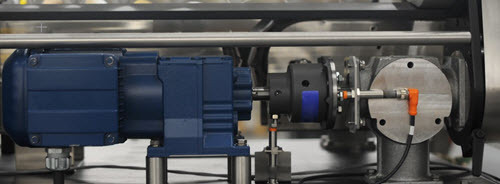
Introduction:
In the realm of facility management, the effective operation and maintenance of electromechanical systems play a vital role in ensuring the smooth functioning of buildings and infrastructure. The fusion of electronics and mechanics has given rise to sophisticated systems that require skilled professionals to handle their operations and maintenance.
Electromechanical systems are a fascinating field that combines the principles of electronics and mechanics. These systems involve the integration of electrical components and mechanical structures to create devices capable of performing a wide range of tasks. From simple household appliances to complex industrial machinery, electromechanical systems are an integral part of our daily lives.
Understanding Electromechanical Systems:
Electromechanical systems are integral to the functioning of modern facilities. These systems combine electrical and mechanical components, utilizing electronic controls to enhance efficiency and automation. Examples include HVAC (Heating, Ventilation, and Air Conditioning) systems, elevators, escalators, fire protection systems, security systems, and energy management systems.
Workforce Requirements:
To ensure the optimal performance of electromechanical systems, facility management teams require a diverse range of professionals with specialized skill sets. Key roles may include:
a. Engineers: Electrical and mechanical engineers are crucial for system design, installation, and troubleshooting. They possess the technical knowledge to handle complex electromechanical systems.
b. Technicians: Skilled technicians play a vital role in maintaining, inspecting, and repairing electromechanical systems. They are responsible for regular maintenance, diagnosing issues, and performing necessary repairs or replacements.
c. Operators: Operators are responsible for monitoring and controlling electromechanical systems, ensuring their proper functioning and responding to alarms or emergencies.
d. Facility Managers: These professionals oversee the operations and maintenance of electromechanical systems, ensuring compliance with regulations, managing budgets, and coordinating the work of the entire facility management team.
Recruitment Strategies:
To build a competent team for operations and maintenance in facility management, consider the following recruitment strategies:
a. Job Portals: Utilize online job portals that cater to the facility management industry to reach potential candidates with the desired skill sets.
b. Industry Networks: Engage with industry-specific networks, associations, and professional forums to connect with qualified professionals in the field of electromechanical systems.
c. Collaboration with Technical Institutes: Partner with technical institutes and vocational schools to tap into fresh talent. Establish internship programs or participate in job fairs to attract entry-level candidates.
d. Skill Assessment: Conduct thorough skill assessments during the recruitment process to evaluate candidates' proficiency in handling electromechanical systems and their related components.
Training and Professional Development:
Given the complexity and evolving nature of electromechanical systems, investing in training and professional development is crucial. Provide regular training sessions to enhance the skills of your workforce, keeping them up-to-date with the latest technologies and maintenance practices. Encourage employees to attend industry conferences, workshops, and certifications to expand their knowledge base.
Safety and Compliance:
Operations and Maintenance in Facility Management must prioritize safety and compliance. Ensure that all staff members are well-versed in safety protocols, including electrical safety, lockout/tagout procedures, and handling hazardous materials. Familiarize your team with relevant regulations and standards, such as building codes, fire safety regulations, and environmental guidelines.
Team Collaboration and Communication:
Effective collaboration and communication within the facility management team are vital for seamless operations and maintenance. Foster a culture of teamwork, encourage knowledge sharing, and promote open lines of communication between different departments and roles. This collaborative approach can lead to efficient problem-solving and improved system performance.
Conclusion:
Electromechanical systems form the backbone of facility management, and staffing considerations for operations and maintenance are crucial to ensure their reliable and efficient functioning. By understanding the workforce requirements, implementing effective recruitment strategies, prioritizing training and professional development.
#Water Treatment Plant Manufacturers in India#Sewage Treatment Plant Manufacturers in India#Operation and Maintenance of Water Treatment#Operations and Maintenance in Facility Management#Water Treatment Plant Project#Sewage Treatment Plant Project#Effluent Treatment#Best Electromechanical Systems#Integrated Electronics and Mechanics
2 notes
·
View notes
Text
In Religion for Atheists (Penguin, 2012) he tries to reconcile the virtues of religious faith with a non-belief in an objectively existing God. That’s perfectly fine; plenty of worthwhile thinkers (Bloch, Althusser, Agamben, Badiou) have tried to do the same. However, for de Botton religion is useful because it ‘teaches us to be polite, to honour one another, to be faithful and sober’ and because it can help us learn ‘how to face the trials of the workplace with a modest and uncomplaining temper.’ No it’s not. Religion is fire and passion, a point of connection between humanity and the infinite, the cry of the oppressed creature, the foundation of universalism. It’s meant to be vast and terrifying and emancipatory. In the face of the vastness of the Absolute Other all human distinctions are meaningless; that’s why so many radical liberation movements have been religious in nature. What this book does is try to turn six millennia of blazing fervour into a half-baked set of minute consolations. It’s an act of hideous violence.
That’s bad enough, but How To Think More About Sex (Picador, 2012) might be the worst book ever written. It’s not too long, but de Botton manages to squeeze into its pages an entire compendium of some of the most grotesque and ungodly sexual acts ever committed. There are the infamous blood orgies of the Mughal emperors, in which the slit throat of a young harem slave was used as a lubricant; there are the thanatophilic séances of certain Theosophist sects, in which the spirits of the dead were summoned and subjected to days of sexual torture; there’s the story of the medieval Saint Quasivermus of Caenumia, who held that congress with earthworms was the only unsinful carnal activity. His book describes every possible interposition of body parts with orifices: there are toes in nostrils, the practice of ‘elbow-fucking,’ and one instance in which an entire dwarf is inserted into an anus. The whole book is awash in a queasy sea of bodily effluent – blood, vomit, bile, cum, pus, piss. Of course, none of this is in the text itself, but it’s the unvoiced content of de Botton’s continual refusal to follow his title and actually think about sex. What he does is recoil from it. For him, sex is for procreation and to stave off loneliness; it’s always a fundamentally selfish act. Most of the time it’s a case of ‘squandered human energy;’ he continually resorts to the idea of sexuality being somehow base: a vestigal, degrading, primal urge we’d all be better off without. At one point he even upholds impotence as an ‘achievement of the ethical imagination.’ None of which is necessarily objectionable – maybe we would be better off without libidinality, free to concentrate on more important things like compiling spreadsheets of sporting statistics and overthrowing capitalism – except for the fact that de Botton never actually makes any argument for this position; he just presents it as a given. He doesn’t seem to even consider the idea that sexuality might be fundamentally related to how we can conceive of ourselves as people, or even that it might actually be enjoyable.
8 notes
·
View notes
Text
Unveiling the Impermeable Shield: Exploring the World of Geomembranes Materials - A Blog By IHR Insights

Introduction:
In the vast realm of civil engineering and environmental protection, there's a silent guardian beneath our feet – Geomembranes. These versatile materials play a crucial role in creating impermeable barriers, shielding the Earth from the impacts of various substances. In this blog, we embark on a journey to unravel the wonders of geomembranes materials, understanding their composition, applications, and the environmental benefits they bring to the table.
Understanding Geomembranes:
Geomembranes are synthetic membranes engineered for their impermeable properties. Typically made from high-density polyethylene (HDPE), low-density polyethylene (LDPE), polyvinyl chloride (PVC), or ethylene propylene diene monomer (EPDM), these materials serve as efficient barriers against liquids and gases. The choice of material depends on the specific requirements of the application, considering factors such as chemical resistance, flexibility, and durability.
Applications Across Industries:
Environmental Containment:
Geomembranes find extensive use in environmental containment systems, preventing the seepage of contaminants into soil and groundwater. Landfills, hazardous waste storage, and industrial ponds rely on geomembranes to create robust barriers that protect the surrounding environment.
Water Resource Management:
Water conservation and management are paramount in today's world. Geomembranes play a vital role in reservoirs, canals, and irrigation systems, preventing water leakage and ensuring efficient water distribution. Additionally, they are employed in wastewater treatment facilities to contain and control effluent.
Mining Industry:
In the mining sector, where the extraction and processing of minerals generate various byproducts, geomembranes act as liners for tailings ponds. These liners prevent the leaching of harmful substances into the soil and water, safeguarding ecosystems from potential contamination.
Aquaculture:
Geomembranes contribute to sustainable aquaculture practices by serving as pond liners. They create a reliable barrier that prevents the seepage of water, maintaining optimal water levels for aquatic life while protecting the surrounding environment.
Environmental Benefits:
Contamination Prevention:
Geomembranes act as a frontline defense against soil and water contamination, safeguarding ecosystems from the harmful effects of pollutants. This is particularly crucial in industries dealing with hazardous materials.
Resource Conservation:
By preventing water seepage in reservoirs and irrigation systems, geomembranes contribute to the efficient use of water resources. This is pivotal in regions facing water scarcity, promoting sustainable water management practices.
Landfill Management:
Geomembranes play a pivotal role in landfill management by containing leachate, the liquid that percolates through waste materials. This containment prevents the potential spread of pollutants into the surrounding soil and groundwater.
Innovation and Future Trends:
As technology advances, the field of geomembranes continues to evolve. Innovations such as geocomposite materials, which combine the benefits of geotextiles and geomembranes, offer enhanced performance and durability. The industry is also exploring biodegradable geomembranes, aligning with the broader global movement towards environmentally friendly solutions.
Read More from our latest study on Geomembranes Market report.
Conclusion:
In the grand tapestry of civil engineering, geomembranes stand as unsung heroes, silently but effectively guarding against environmental threats. As our understanding of environmental sustainability deepens, the importance of these impermeable barriers becomes increasingly apparent. From waste containment to water conservation, geomembranes play a pivotal role in shaping a more resilient and sustainable future for our planet.
– Analyst Team
IHR Insights
[email protected]
4 notes
·
View notes